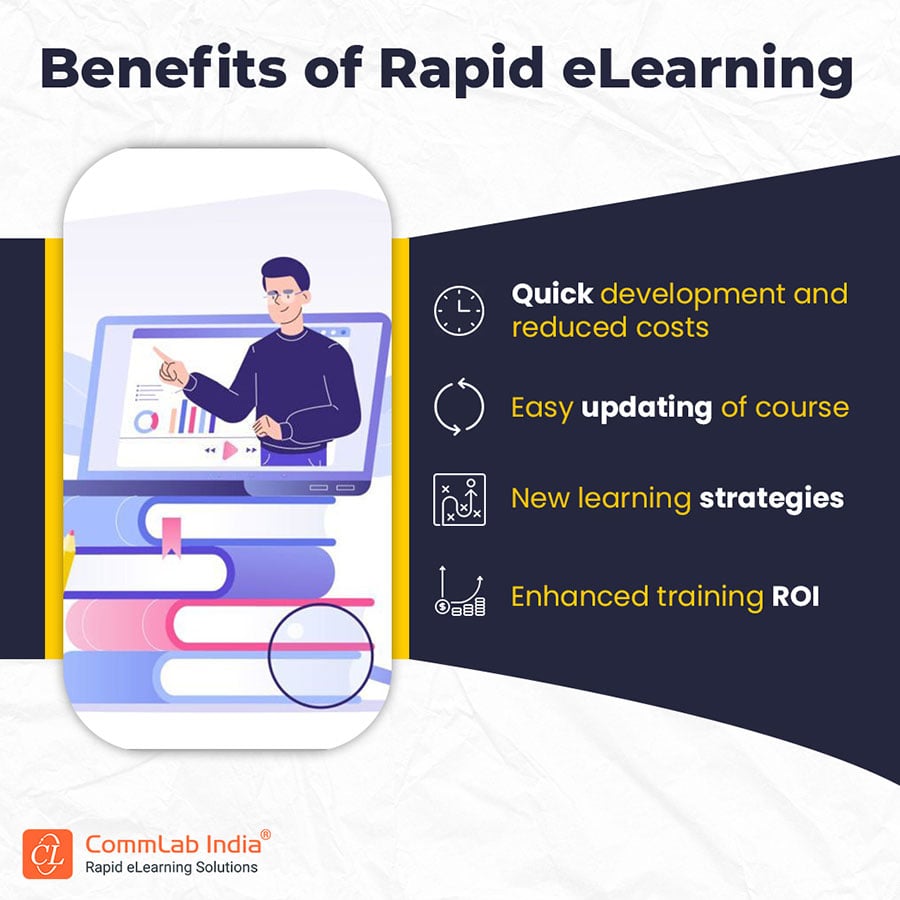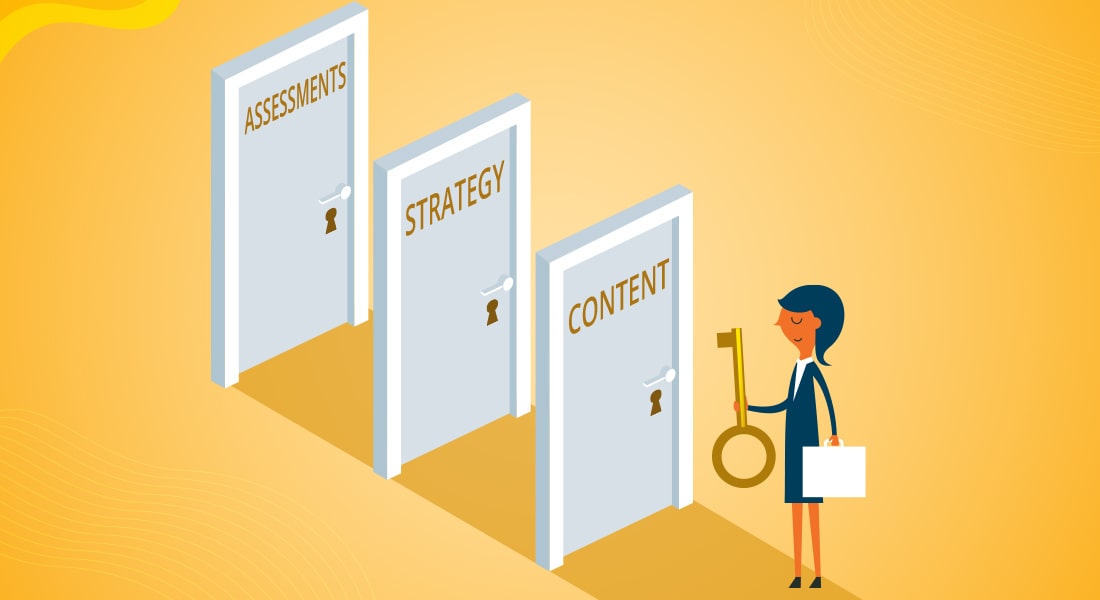Harness the Power of Rapid eLearning with Amazing Benefits [Infographic]
![Harness the Power of Rapid eLearning with Amazing Benefits [Infographic] Harness the Power of Rapid eLearning with Amazing Benefits [Infographic]](https://blog.commlabindia.com/hubfs/Imported_Blog_Media/Harness-the-Power-of-Raid-eLearning-with-Amazing-Benefits-Infographic.jpg)
Traditional methods of training often struggle to keep up with the rapid changes in technology and the evolving business landscape. This is where rapid eLearning comes into play – a dynamic approach to creating and delivering online training content quickly and efficiently. In this blog post, we’ll dive deep into the concept of rapid eLearning, its benefits, and strategies to effectively implement it.
Here is an infographic with some amazing benefits of rapid eLearning.
With these benefits let us go through some effective strategies to implement rapid eLearning in your organization.
→ Download Now: Rapid eLearning Design for Quick Rollout
Strategies for Effective Rapid eLearning Implementation
Clear Learning Objectives
Start by defining clear and specific learning objectives. These objectives will guide the content creation process and ensure that the course stays focused and relevant.
Content Prioritization
Identify the most important information that needs to be conveyed. Focus on essential concepts and skills and avoid overloading the course with excessive details.
Templates and Authoring Tools
Leverage rapid eLearning authoring tools like Articulate Rise, Adobe Captivate, etc. These tools offer pre-designed templates and features that can significantly speed up content creation.
Chunking Content
Break down the content into smaller, manageable chunks. This approach makes it easier for learners to digest information and enhances retention.
Multimedia Integration
Incorporate multimedia elements such as videos, interactive quizzes, and simulations. These elements engage learners and enhance the overall learning experience.
Adopting Microlearning
Consider using microlearning modules, which are short, focused lessons that can be completed in a brief amount of time. Microlearning aligns well with rapid eLearning goals.
Collaborative Development
Involve subject matter experts, instructional designers, and graphic designers in the content creation process. Collaboration ensures that the course content is accurate and visually appealing.
Iterative Process
Rapid eLearning implementation doesn’t mean sacrificing quality. Use an iterative approach where you create, review, and refine the content in multiple cycles.
Mobile Compatibility
Design responsive and mobile-friendly courses. This enables learners to access content on various devices, enhancing accessibility and convenience.
Feedback and Improvement
Collect feedback from learners and stakeholders after the initial implementation. Use this feedback to make necessary improvements and updates to the course.
Bottom Line
A rapid eLearning implementation is a valuable approach for delivering timely and effective online courses offering some great benefits. By following clear strategies and utilizing appropriate tools, educators and organizations can create engaging and informative content in a fraction of the time it would take using traditional methods. Rapid eLearning is not just speed, but also quality, engagement, and effective knowledge transfer. Learn all about rapid eLearning with our eBook. Grab your copy now!







![7 Quick Tips to Frame Effective Learning Objectives for Custom eLearning [Infographic]](https://blog.commlabindia.com/hubfs/blogs/tips-frame-effective-learning-objectives.jpg)